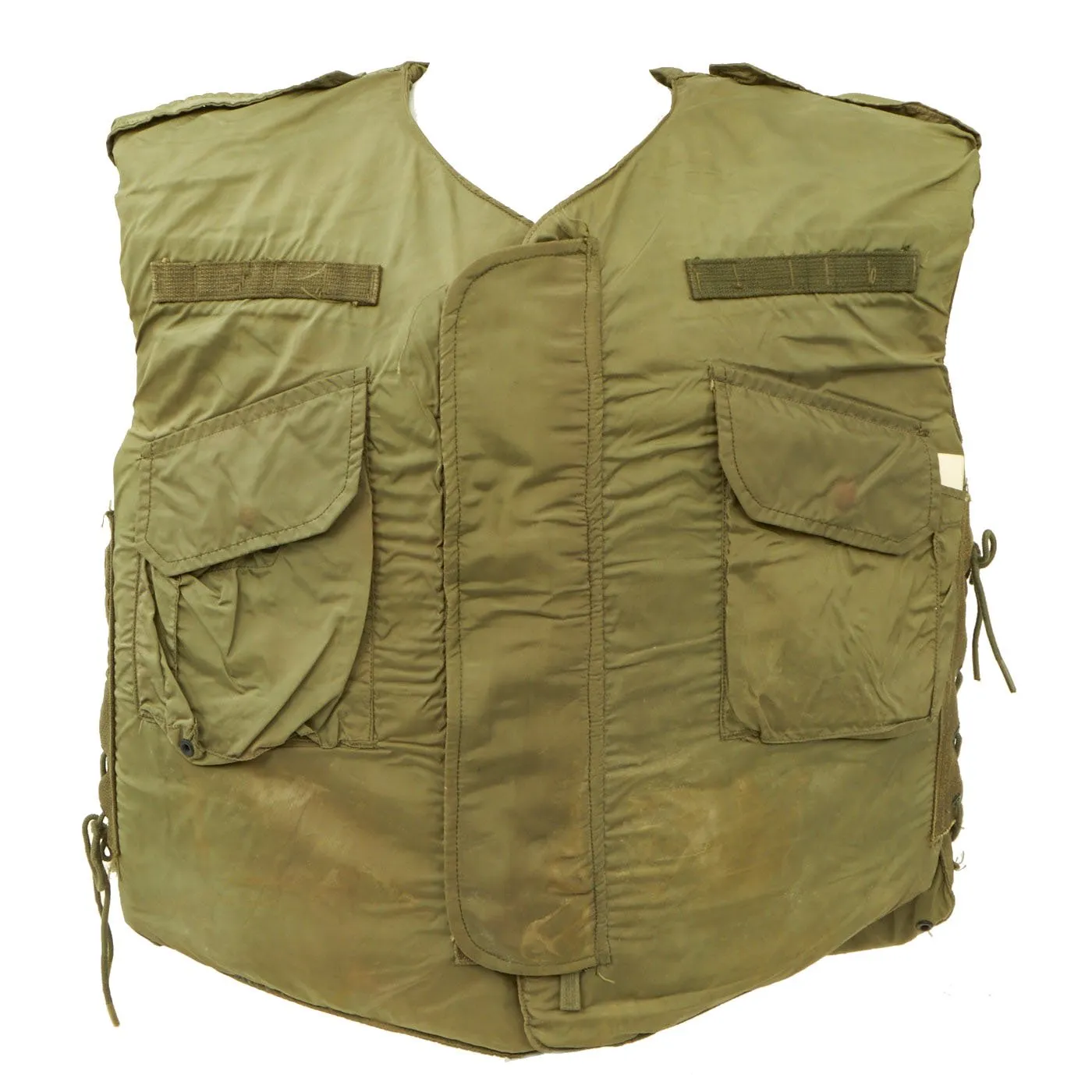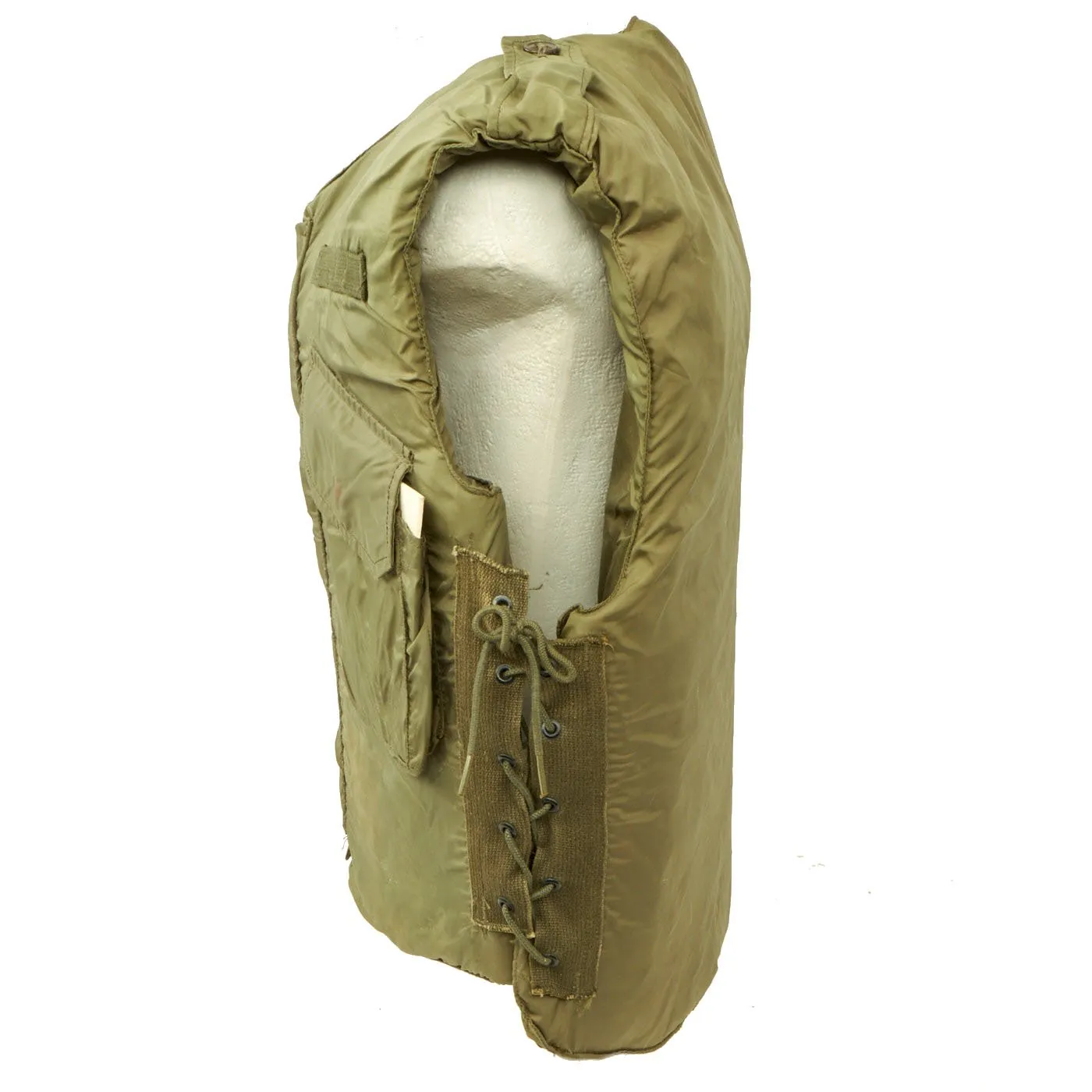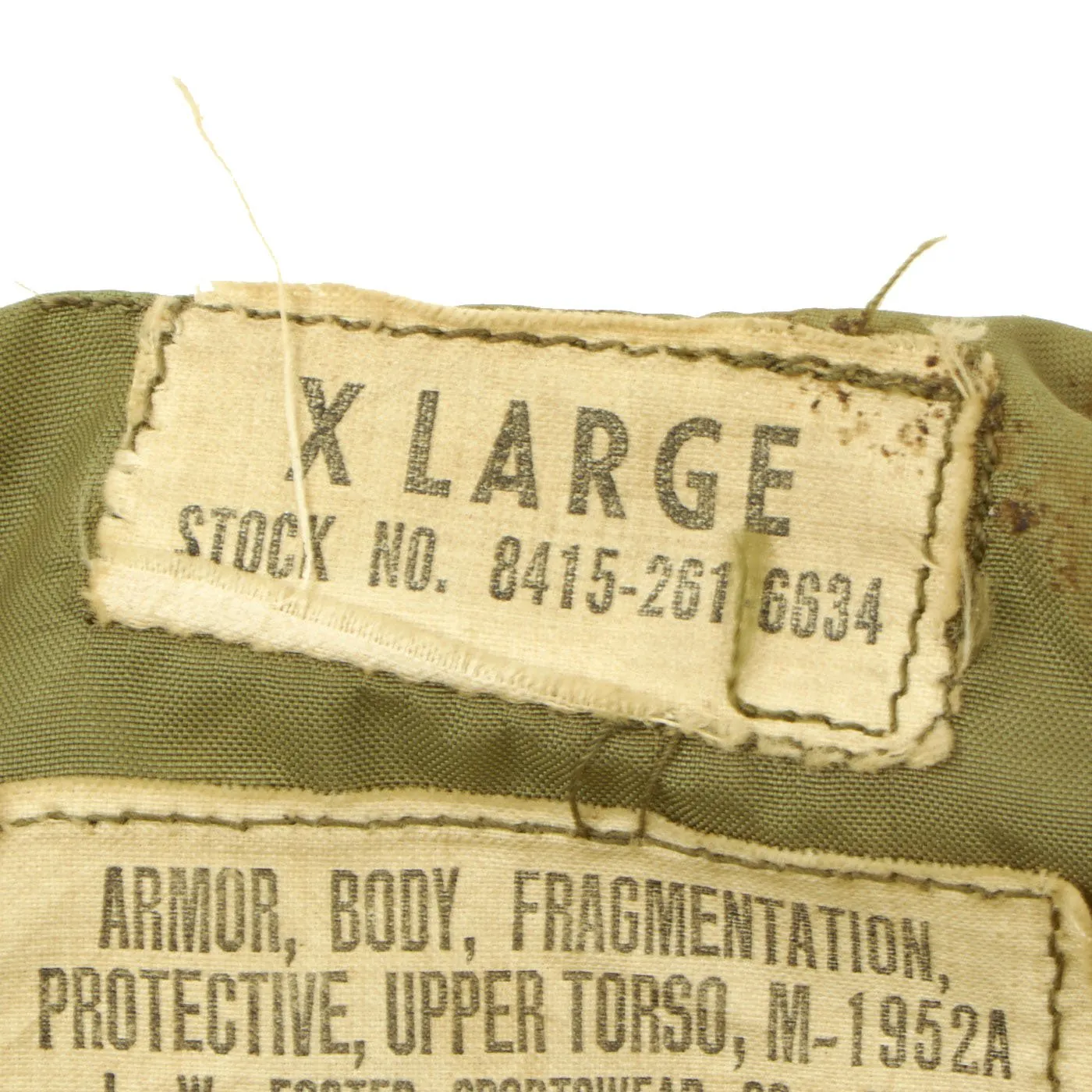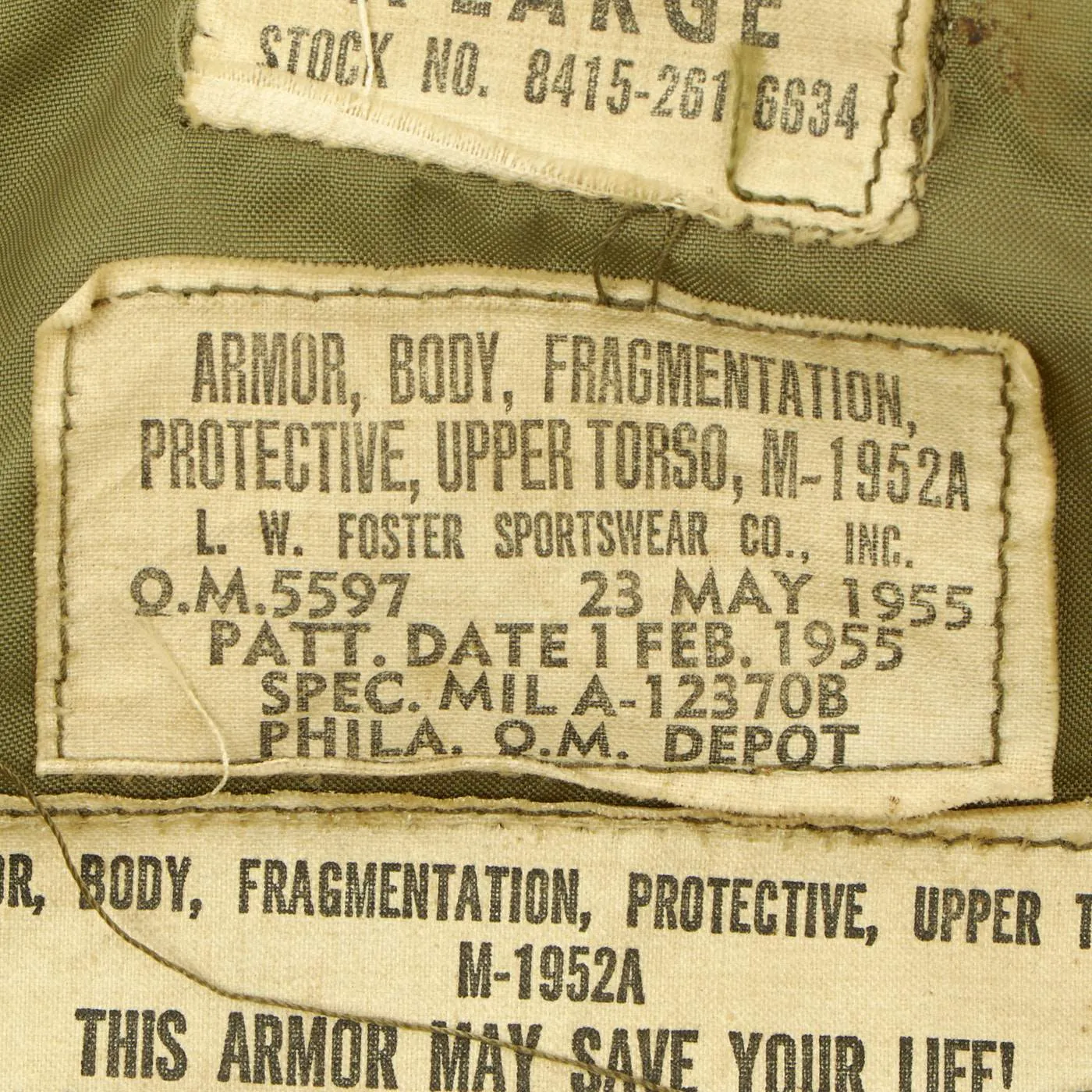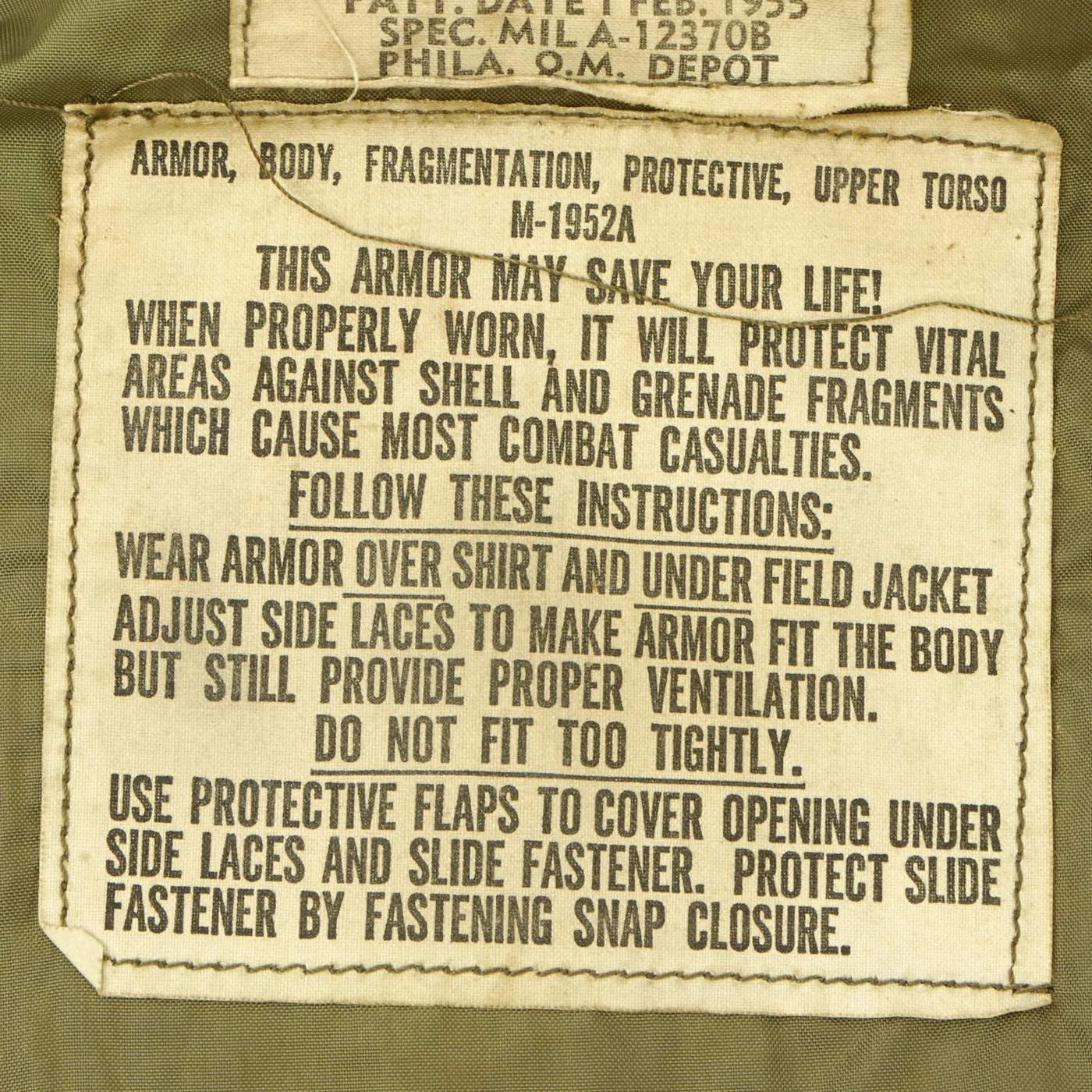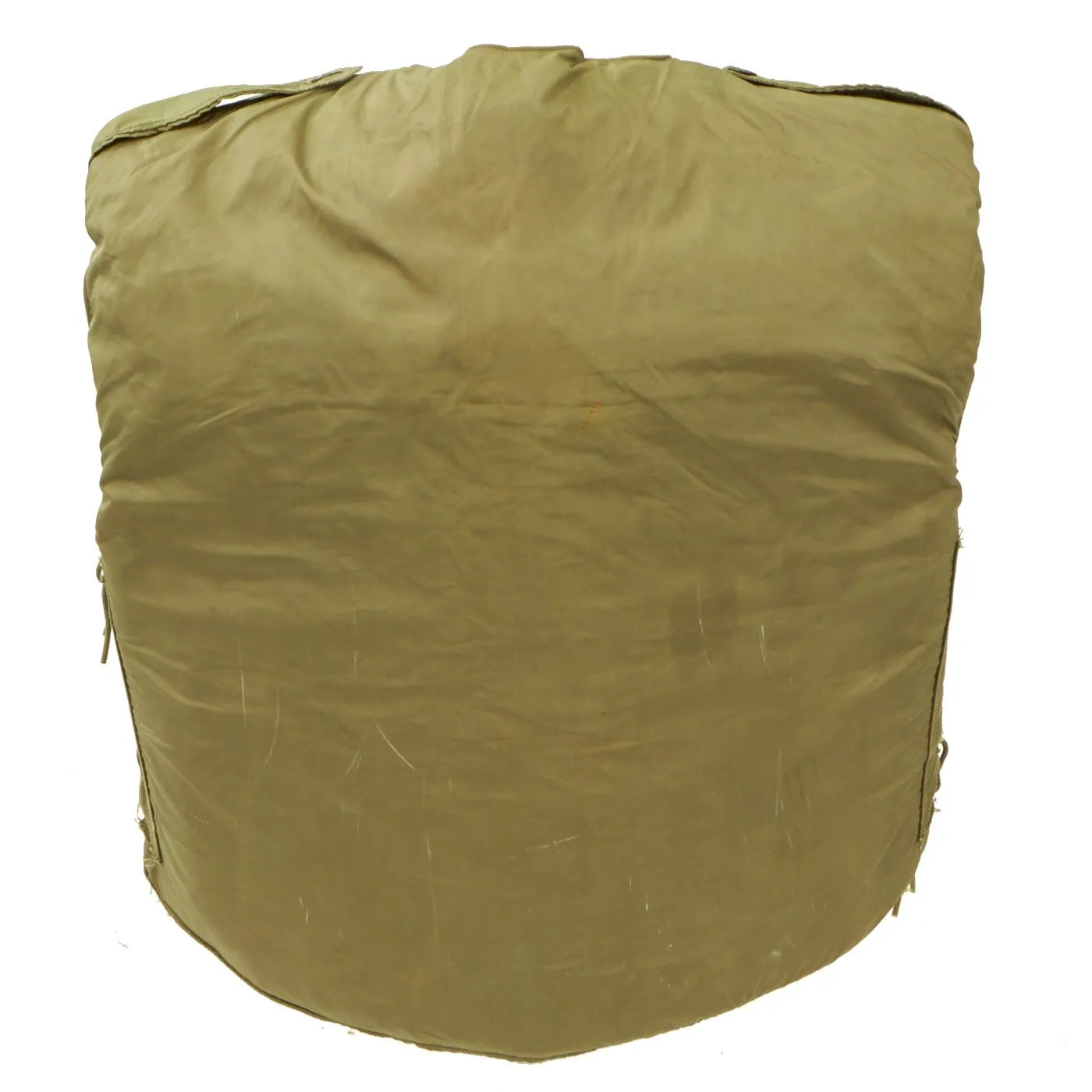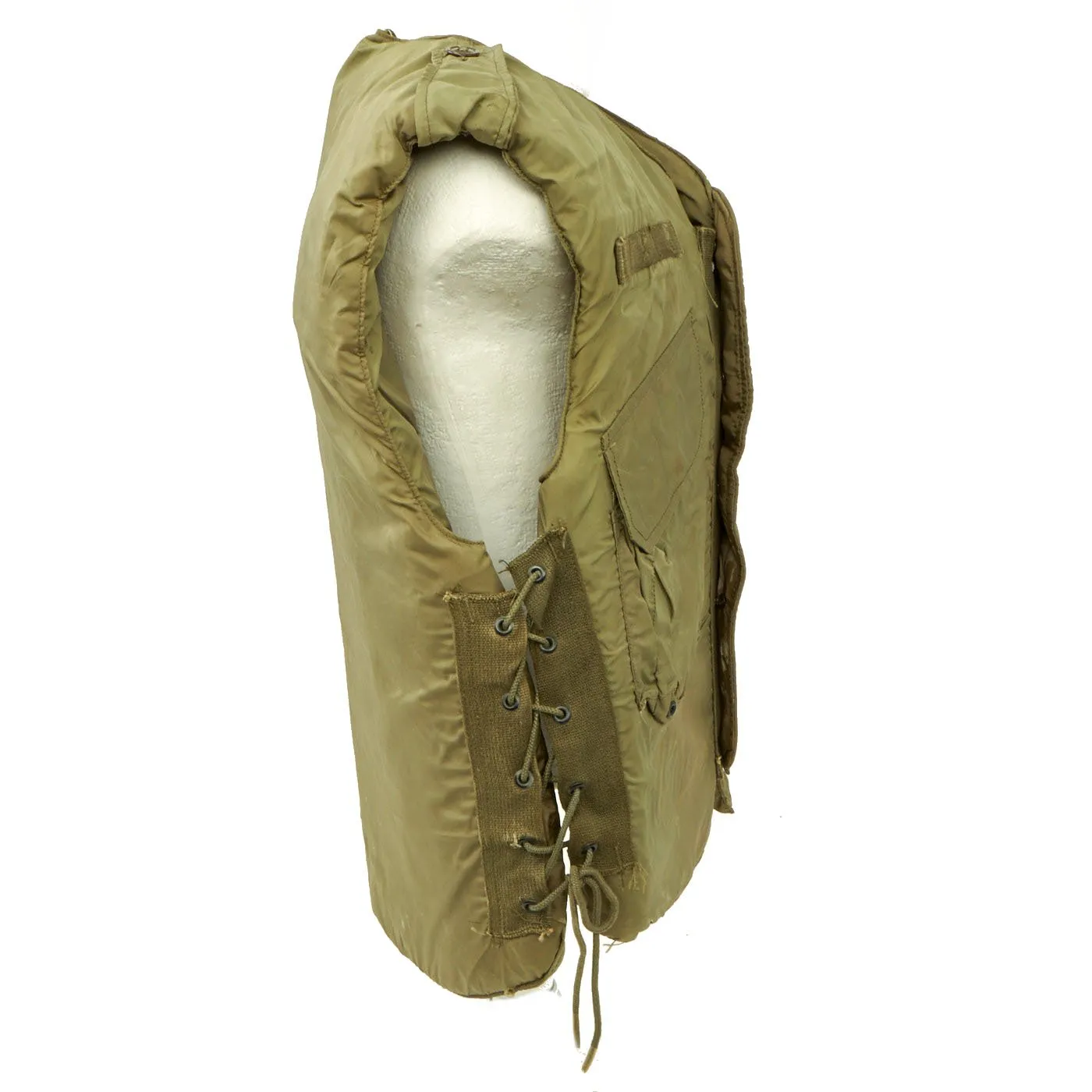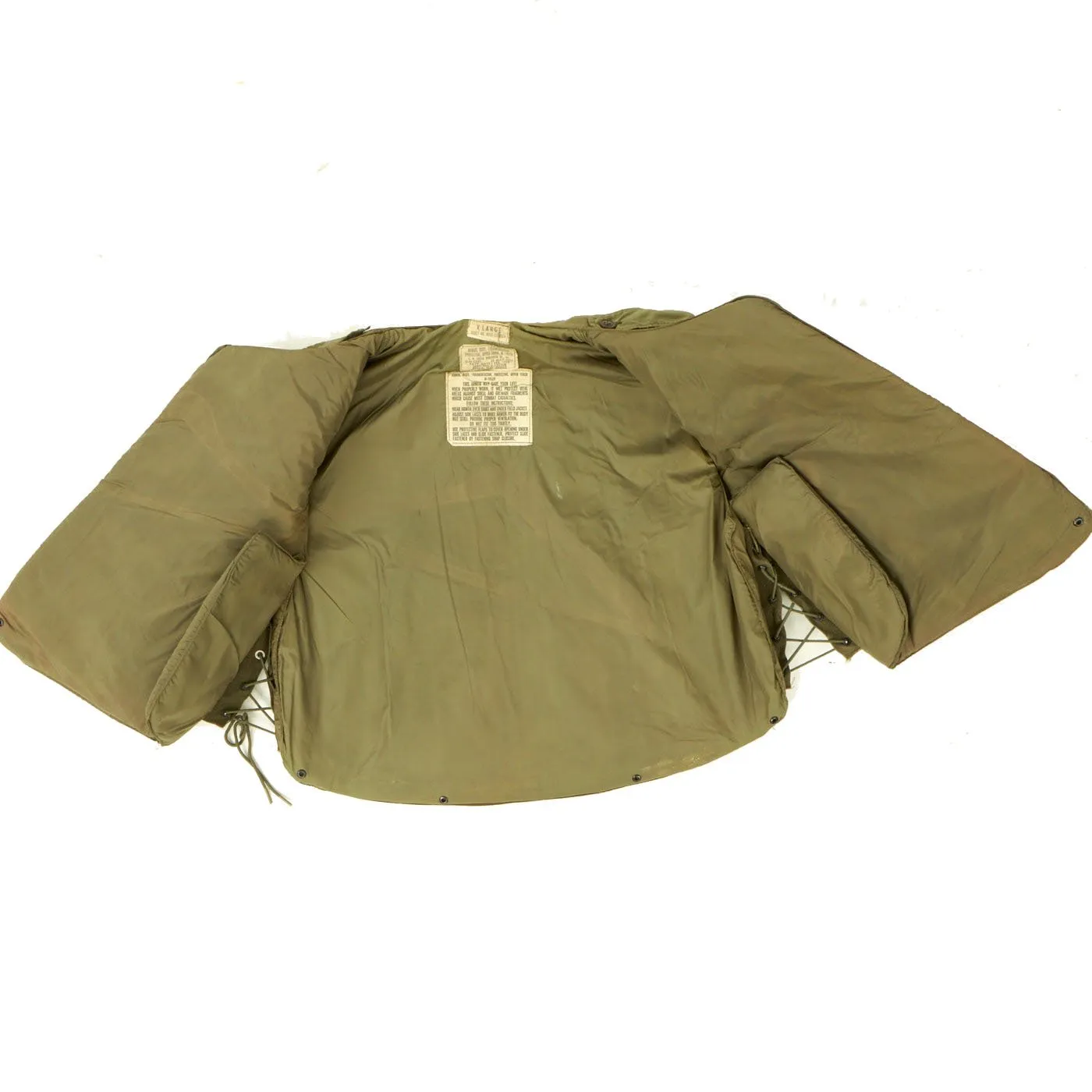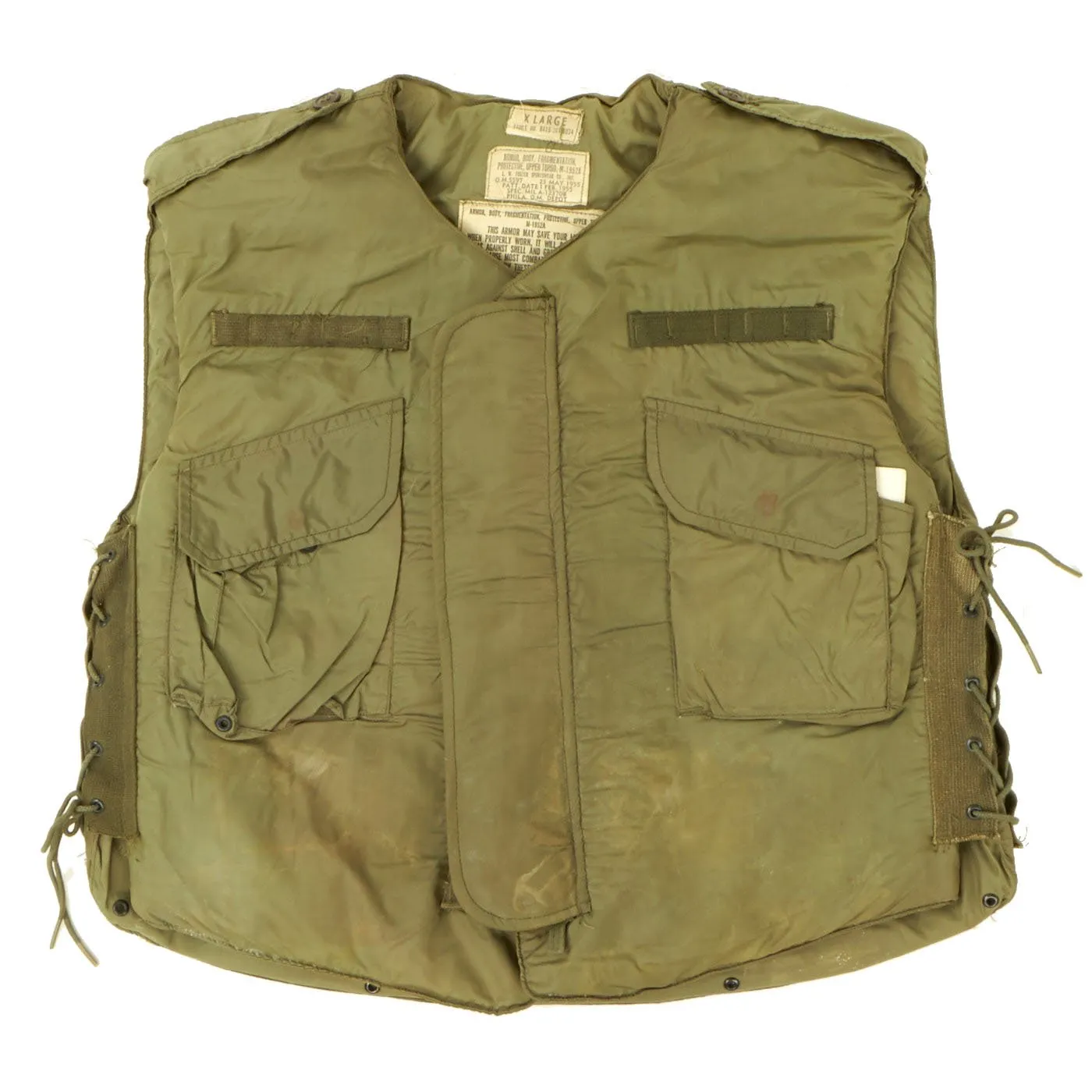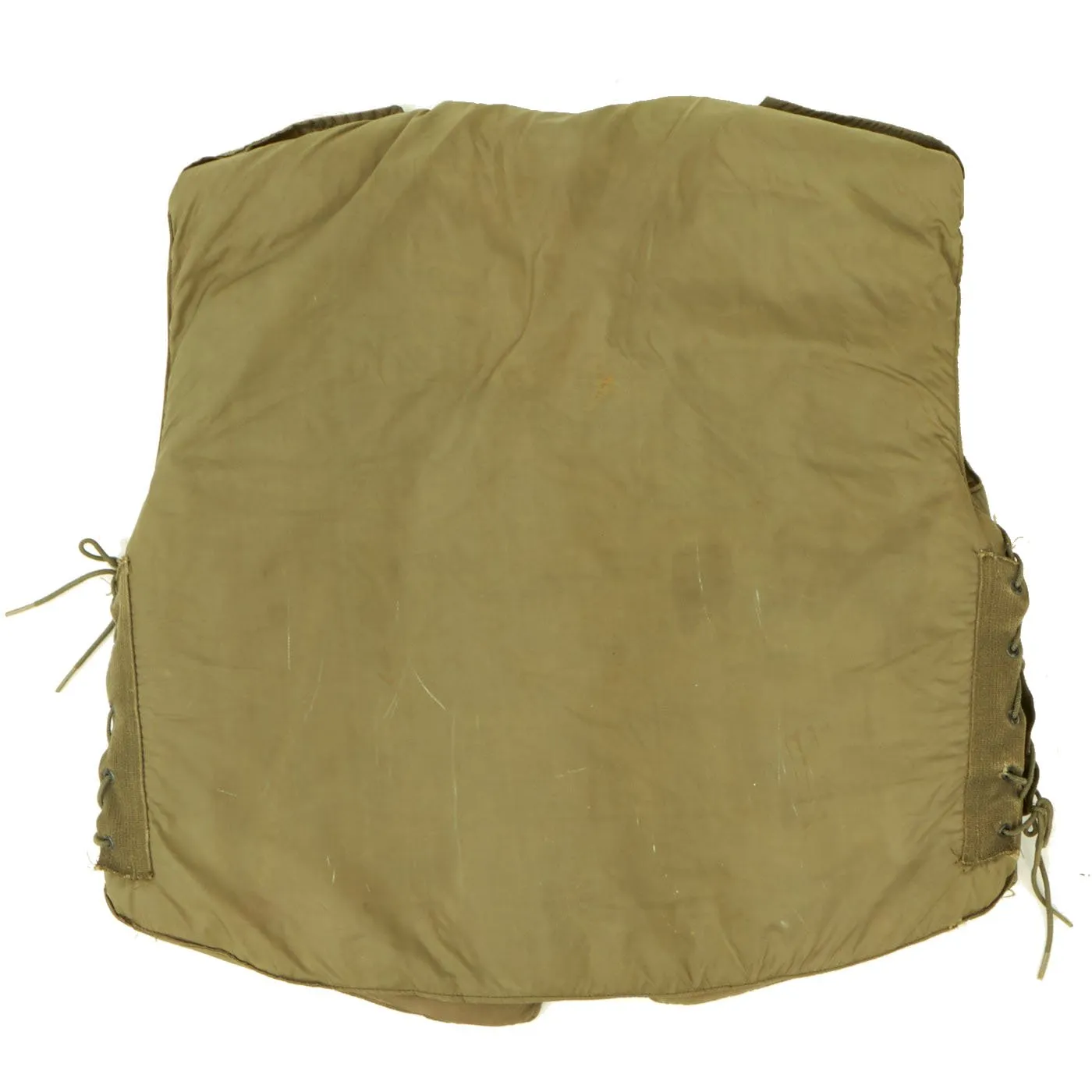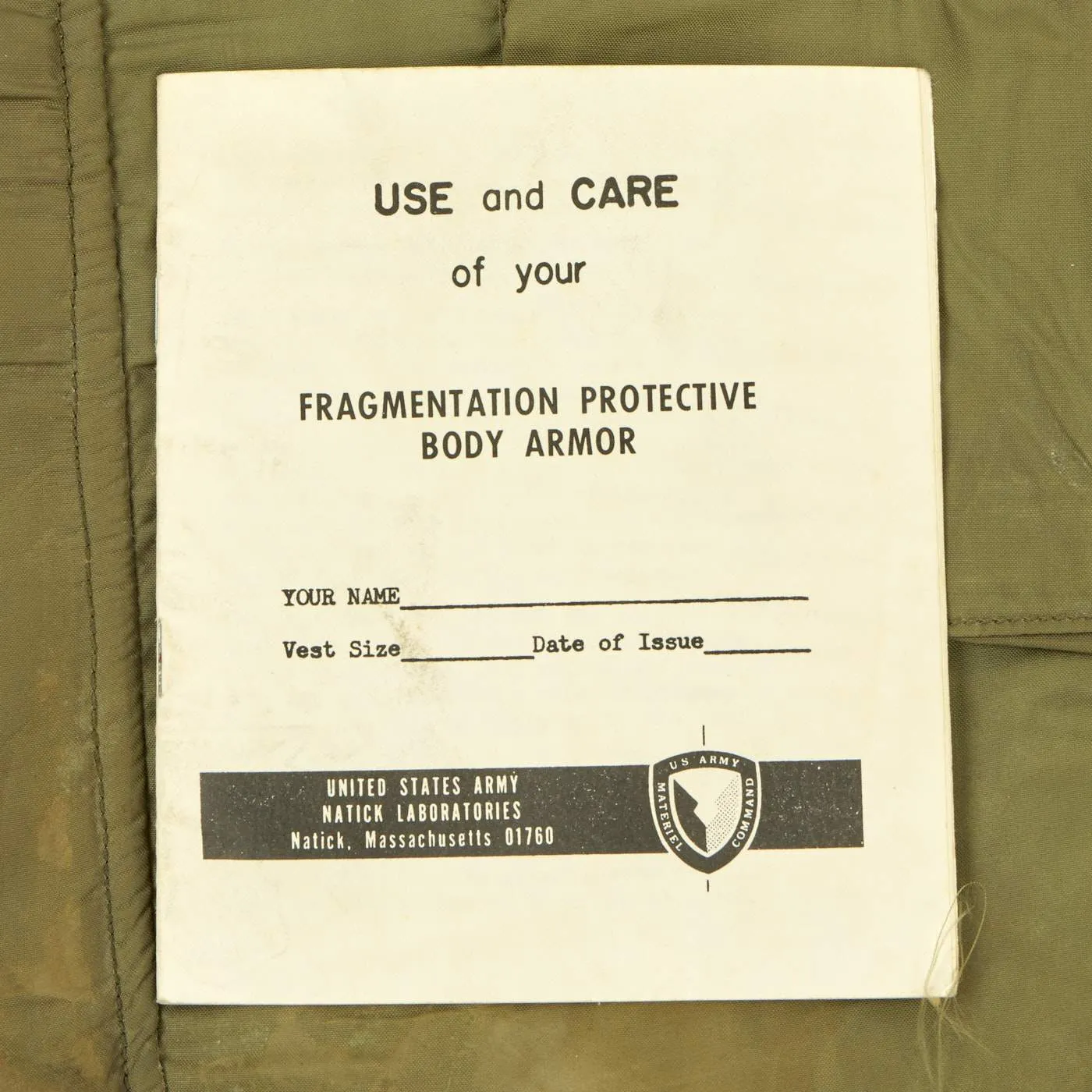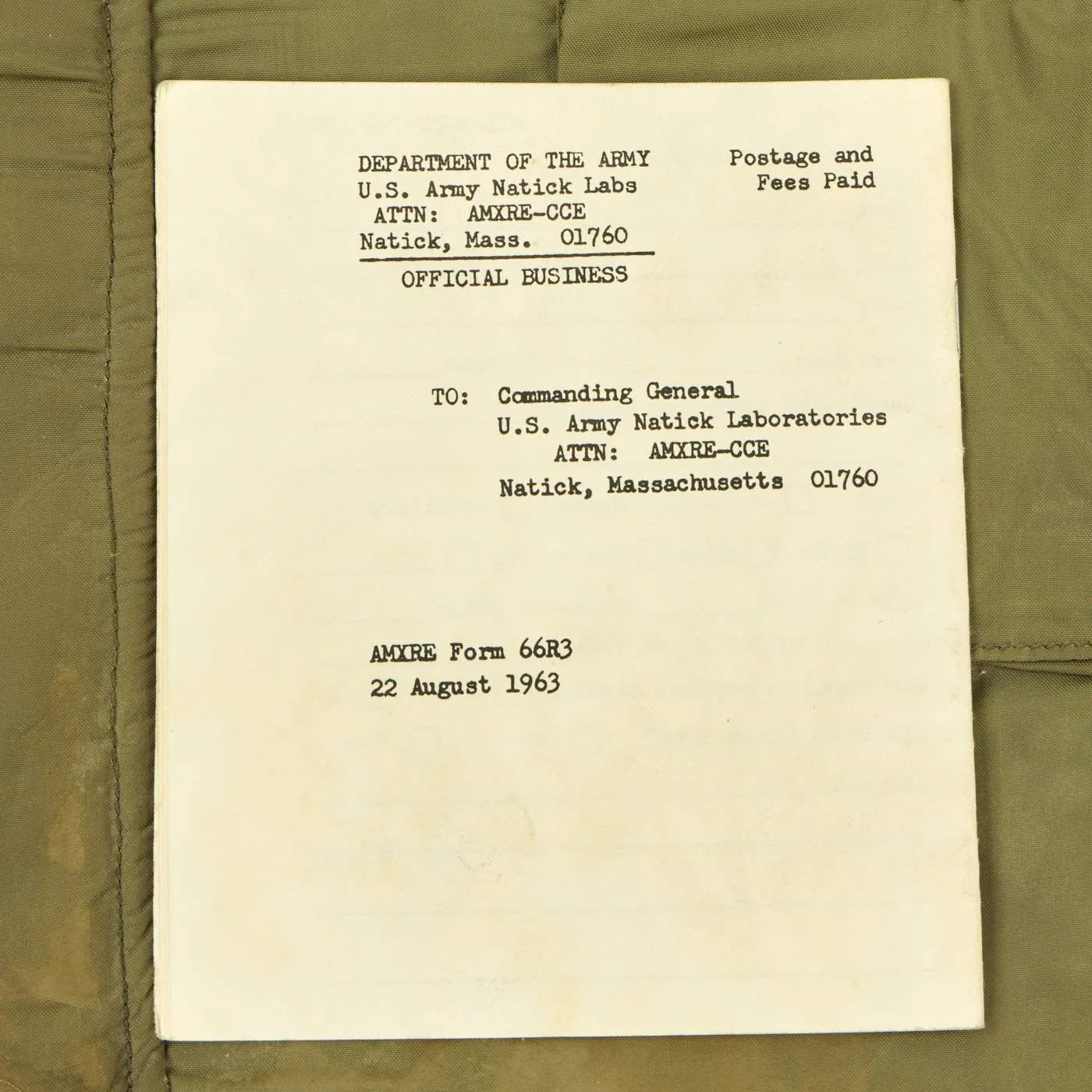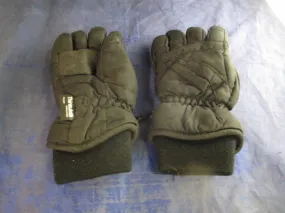Original Item: Only One Available. This is a classic M1952A Body Armor vest offered in very good condition in size X LARGE with data table that reads:
PROTECTIVE, UPPER TORSO, M-1952A
L.W. FORSTER SPORTSWEAR CO. INC.
Q.M.5597 23 MAY 1955
This armor shows some fading and staining from age, though it does not appear to have been issued, or was only in service for a short period of time, as it does not have the usual wear jacket in service would. Also included is an original Army Use and Care Manual.
Body armor was widely used for the first time during the Korean War, providing not only protection but also a much-needed morale boost for soldiers.
"Its use was so closely interwoven with the defensive psychology of static warfare as to make it almost a symbol of the new GI, who, lacking in the enthusiasm and clear objectives of World War II, calculated his own victory in terms of personal survival," according to U.S. Army Uniforms of the Korean War, a book by Shelby Stanton.
Body armor is credited with reducing chest and stomach wounds by 60 percent during the war, according to Stanton's book.
During World War II, small-arms fire and mortar and grenade fragments caused many casualties and led the military to search for a body armor system. A flak jacket was developed for bomber crews, but infantrymen generally didn't wear armor.
The first vests were based closely on the flak jacket, which used fiberglass and a resin laminate. From June to October 1951, a joint Army and Navy group in Korea tested some 40 armor jackets.
Infantrymen liked the body armor. In March 1952, each division was given 350 "Marine vests," the nickname for the M1951.
The "Marine vest" fastened at the sides and protected a soldier's torso with curved, overlapping plates. It weighed 7½ pounds and was widely issued.
The Army Quartermaster Corps also developed the M12, a two-piece, 12-pound vest that soldiers found cumbersome. Eventually, the Army developed the M1952, a vest that became standard through the Vietnam War.
The M1952 weighed 8½ pounds. It had two front and back panels composed of ballistic nylon bonded with laminating resin. The vest was all nylon, which allowed more comfort and flexibility.
At the end of 1952, units were receiving early versions of the M1952, the M12 and two other vests. The new M1952 didn't begin to arrive in significant numbers until February 1953, and distribution was lopsided.
Units lost vests during combat and among soldiers rotating in and out of the front lines.
"We had just gotten bullet-proof vests about a week before the cease-fire, but it was so hot at that time of year, we didn't wear them very long," said Frank Thomas, who was a private first class with the 279th Infantry Regiment. "They weighed about 10 pounds and were about an inch thick and terribly uncomfortable."




